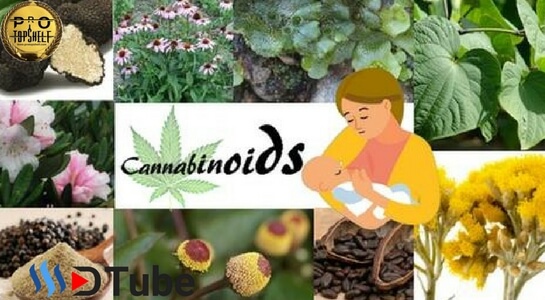
Cannabinoid is a term that is thrown around a lot in the cannabis industry but did you know there are many different types of cannabinoids that are found throughout Mother Nature’s complex web? Interestingly enough, cannabis is not the only plant that produces healing phytocannabinoids. Many superfoods (and flowers) contain the healing compounds that nourish our endocannabinoid system. You can still benefit from the same cannabinoids that give the cannabis plant its medicinal properties, without consuming cannabis. Researchers are looking for other plant chemicals that may have similar effects. Perhaps unsurprisingly, there are quite a few of them.
Cacao Theobroma cacao
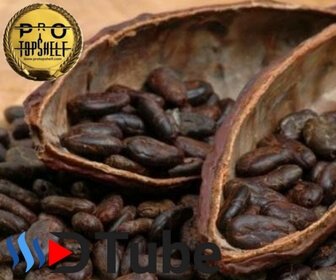
Theobroma cacao, literally translated as “cacao, food of the gods,” is a superfood that contains many therapeutic properties. Cacao contains several of different “happy brain” chemicals such as theobromine, phenylethylamine, tryptophan, and anandamide.
Cacao is rich in anandamide (uh-non-da-mide), an endocannabinoid that is naturally produced in the human brain; it regulates mood, memory, appetite, and pain perception. Anandamide is known as the “bliss” neurotransmitter because it causes a euphoric “high” when released it is often called the body’s natural version of THC. In order to absorb all the health benefits of cacao, it’s important to source raw, organic, fair-trade cacao NOT processed or milk chocolate. It’s the addition of powdered milk to cacao that blocks the body’s absorption of the healing nutrients of cacao.
Black Pepper Piper nigrum
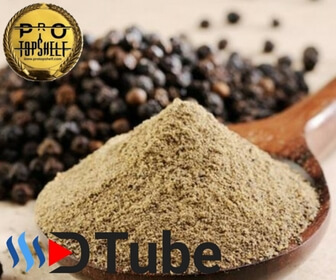
Black pepper has much in common with cannabis. The plant’s aroma molecule, called beta-caryophyllene (BCP), functions as a cannabinoid. Similar to other plant-based cannabinoids, BCP binds with the CB2 receptors. This gives black pepper its therapeutic effect of reducing inflammation. Various research has suggested that BCP could be used for the treatment of arthritis and osteoporosis. In addition, it may potentially increase the effectiveness of certain anti-cancer drugs.
Coneflower Echinacea
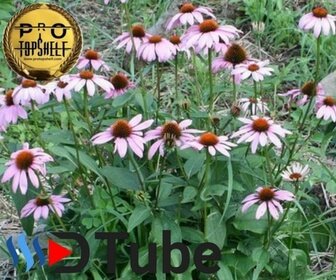
Commonly used as a go-to cold remedy, echinacea actually has a lot in common with our favorite girl, Marijuana. However, echinacea engages the endocannabinoid system (the CB1 receptor, specifically) with cannabimimetics rather than cannabinoids. It’s this engagement with the endocannabinoid system that causes echinacea to relieve anxiety, migraines, fatigue, and arthritis. The N-alkyl amides (NAAs) contained in echinacea are very similar to THC in the way they regulate pain, inflammation, and the immune system.
Black Truffles Tuber melanosporum
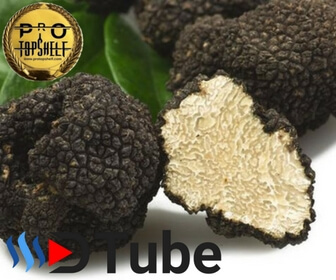
Similarly to cannabis and cacao, black truffles also create anandamine. Some have dubbed anandamide “the bliss molecule,” because it helps the body regulate mood. In addition, it regulates how we perceive pain. It does this by binding with CB1 receptors that are present in the central nervous system.
Helichrysum – Helichrysum italicum
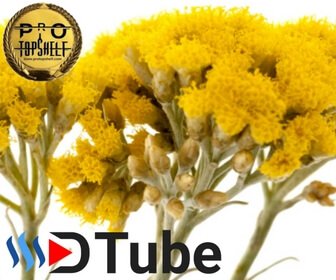
Most often used as an antidepressant and mood-stabilizer, helichrysum actually contains large amounts of cannabigerol (CBG), a phytocannabinoid found in the cannabis plant! More research needs to be done on the discovery of CBG in helichrysum flowers but strict South African native plant laws make it near impossible to study the plant out of the country. Giovanni Appendino, the researcher who discovered “non-cannabis” CBG, believes the cannabinoid-like compounds made by all plants begin from an aromatic acid. Because of its use in African ritual ceremonies, Appendino believes helichrysum has psychotropic effects similar to cannabis.
Kava Piper methysticum
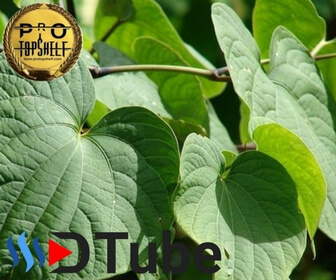
Typically used in a medicinal tea, kava can ease anxiety and chronic pain. It is also induces a sedative effect. Hence, in certain cultures, kava tea has become a popular natural anxiety remedy.
Kava is the national drink of Fiji. It is made by mixing the powdered kava root of this peppery plant with water. Similar to THC, components in kava bind to CB1 receptors in brain locations associated with addiction and cravings. For decades, Pacific Islanders in Fiji have been using kava as a treatment for addiction.
Chinese Rhododendron
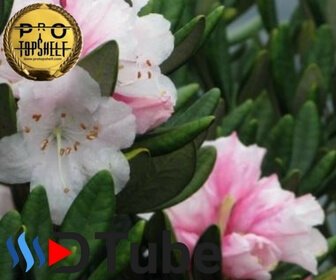
Produced from one of the most antimicrobial plants on the planet, essential oil extracted from Chinese Rhododendron can kill anything from the staph infection to cancer cells, according to Italian researchers at University of Padova.
A 2011 study, New Cannabinoid-Like Chromane and Chromene Derivatives from Rhododendron anthopogonoides, found that “Two new cannabinoid-like chromane and chromene derivatives named anthopogocyclolic acid and anthopogochromenic acid and five related compounds are known as synthetic analogues of cannabinoids: cannabichromene (CBC) type, cannabicyclol (CBL) type, and cannabicitran (CBT) type, have been isolated together with geranyl orsellinic acid from the Chinese medicinal plant Rhododendron anthopogonoides”.
Liverwort Radula Marginata
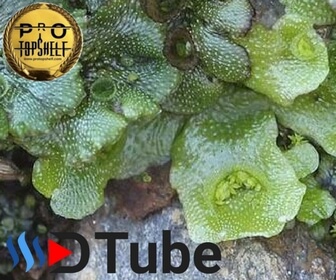
Liverwort, native to New Zealand, contains perrottetinenic acid which is similar to THC. Like THC, it interacts with the CB1 receptor. While liverwort does not seem to have any psychotropic effects, it is believed to bind with CB1 receptors. Just like cannabis, liverwort is known for treating bronchitis and chronic respiratory problems, gallbladder, liver and bladder problems.
Electric Daisy Acmella Oleracea
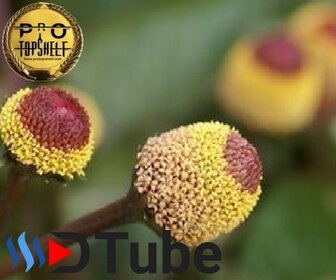
Long used as a pain-numbing gel in the Amazon region, electric daisy was found to block pain receptors at their nerve endings thanks to research conducted at Cambridge University. The compounds that cause the effective pain-relief of this flower are cannabinoids called N-isobutylamides that affect the CB2 receptors and regulate pain and inflammation throughout the body.
Fun facts
While it’s not a plant, studies show that there are natural cannabinoids present in breast milk that are crucial for infant development. The cannabinoids found in breast milk protect against viruses, bacteria, and even cancer. A very important endocannabinoid is passed from mother to baby, a type of neuromodulatory lipid that stimulates the suckling process and basically teaches a newborn child how to eat. Without these cannabinoids in breast milk, newborn children wouldn’t know how to eat,
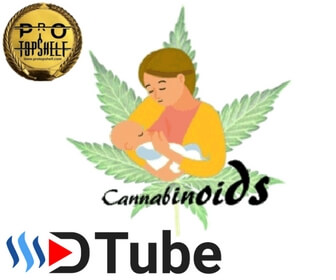
but more importantly, they wouldn’t really have the desire to eat. Similar to how cannabis triggers the munchies, the cannabinoids in breast milk trigger hunger in infants that promotes growth and development. You may also find it interesting that hemp seeds and hemp seed oil contain very low concentration of cannabinoids, at less than 25 parts per million (ppm). Compare this to CBD oil extracts produced from cannabis plant flowers, which have 150,000 ppm CBD. (source) Cannabidiol (CBD) is the most common cannabinoid in most cannabis plants.
We encourage all readers to join us on #Steemit and #DTube to share their views on our videos, articles and blog posts. We are committed to maintaining a lively but civil forum for discussion, so we ask you to avoid personal attacks, and please keep your comments relevant and respectful.
https://steemit.com/introduceyourself/@protopshelf/a-big-hello-to-the-steemit-community
Great article. Nothing new to me...but this kind of information needs to be repeated. People need to be made aware of the medicinal aspects of cannabinoids rather than falsely assuming it’s all about getting high. Not that there’s anything wrong with that. 😈
Downvoting a post can decrease pending rewards and make it less visible. Common reasons:
Submit
Yes, I love we can add this information to the #blockchain and no one man can decide if we the people can read it.
Downvoting a post can decrease pending rewards and make it less visible. Common reasons:
Submit
Exactly. And hopefully this platform will remain true to its mission.
Downvoting a post can decrease pending rewards and make it less visible. Common reasons:
Submit
Thank you for this post! You just got an upvote| Resteem and Follow

Downvoting a post can decrease pending rewards and make it less visible. Common reasons:
Submit
Thank you so much
Downvoting a post can decrease pending rewards and make it less visible. Common reasons:
Submit
Hi! I am a robot. I just upvoted you! I found similar content that readers might be interested in:
http://www.wakingtimes.com/2017/07/24/5-foods-beneficial-cannabinoids-found-cannabis/
Downvoting a post can decrease pending rewards and make it less visible. Common reasons:
Submit